

Hide/Show
8:30 a.m.–10:25 a.m. | Track: Diagnostics | CRCE: 1.50
Show description
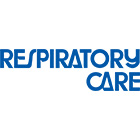
Researchers present the results of their work. Authors briefly present their findings and engage in an open discussion with the attendees.
Supported by an unrestricted educational grant from
8:30 a.m.–10:25 a.m. | Track: Neonatal/Pediatrics | CRCE: 1.50
Show description

Researchers present the results of their work. Authors briefly present their findings and engage in an open discussion with the attendees.
Supported by an unrestricted educational grant from
8:30 a.m.–9:05 a.m. | Track: Education | CRCE: 0.58
Karsten Roberts, MSc, RRT, RRT-ACCS, FAARC
Show description

Students are required to complete clinical rotations to gain hands-on experience in patient care. Telemedicine is a means by which future RTs may interact on both an in-patient and out-patient basis, including critical care settings. This lecture will review the ways in which telemedicine can be used in clinical education and the value it provides to students.
8:30 a.m.–9:05 a.m. | Track: Neonatal/Pediatrics | CRCE: 0.58
Jennifer Watts, BS, RRT, C-NPT
Show description
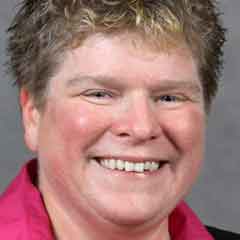
Inter-facility transport of neonatal and pediatric patients with complex cardiac disease presents significant clinical challenges. This presentation will review key assessment findings and interventions needed to safely transport this patient population.
8:30 a.m.–10:35 a.m. | Track: Leadership & Management
8:30 a.m.–9:05 a.m. | CRCE: 0.58
Dean Hess, PhD, RRT, FAARC
Show description
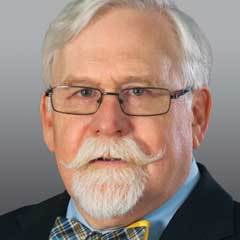
Evidenced-based medicine has been a focus in medicine over the last two decades. The best evidence is based on randomized controlled trials, meta-analyses and guidelines using all possible levels of evidence. The evidence for many respiratory therapy procedures and in some cases lack of evidence has been well described. How do managers put evidence into practice in their departments? What are the roadblocks? Who are the stakeholders? These issues will be discussed relative to the importance of the survival of the profession.
9:15 a.m.–9:50 a.m. | CRCE: 0.58
Garry Kauffman, RRT, MPA, FACHE, FAARC
Show description

Managing a respiratory therapy department requires several skills that include understanding what therapists do at the bedside and how to track and account for that work. The history of the profession has led us to a crossroads as the health care system evolved from an emphasis on productivity to an emphasis on outcomes. Einstein said, “Not everything that can be counted counts and not everything that counts can be counted.” How do respiratory therapy departments determine what ‘counts’ and how do we demonstrate value to patients, hospitals, and the U.S. health system? The future of the profession requires that we evolve with the changing metrics used to evaluate services. This presentation will explore this management shift.
10:00 a.m.–10:35 a.m. | CRCE: 0.58
Robert L. Chatburn, MHHS, RRT, RRT-NPS, FAARC
Show description
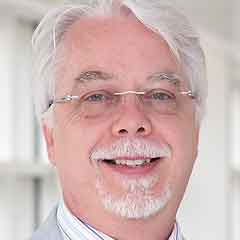
The practice of respiratory therapy emerged from a fee for service model and charging for procedures. With changes in reimbursement, productivity became an important metric for justifying staff and defining the role of the respiratory therapist. In the current environment, respiratory therapy should move to a value efficiency model. A change from counting how much we do, to doing what counts. How is value efficiency defined? What is the process required to move to a value efficiency model? These thoughts are integrated into a plan to change and create a path for the future of the profession, which will be reviewed in this presentation.
8:30 a.m.–10:35 a.m. | Track: Neonatal/Pediatrics
8:30 a.m.–9:05 a.m. | CRCE: 0.58
Martin Kneyber, MD, PhD, FCCM
Show description

In this session, we will discuss some of the controversies and uncertainties in children. These include what tidal volume should be targeted, how PEEP should be set and what the role of prone positioning is in children with ARDS. We will discuss the available pediatric and relevant adult literature, discuss the current PALICC recommendations, and we will provide the attendees with practice recommendations based on current guidelines. The attendees will gain knowledge and insights in management of pediatric ARDS.
9:15 a.m.–9:50 a.m. | CRCE: 0.58
Ira Cheifetz, MD, FAARC
Show description
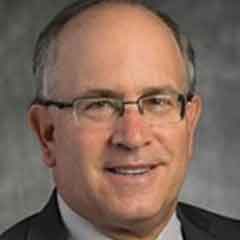
Determining optimal PEEP in children with PARDS can be challenging but is vital to their care. This presentation will focus on how PEEP should be set, including best evidence, and current PALICC guidelines.
10:00 a.m.–10:35 a.m. | CRCE: 0.58
Natalie Napolitano, MPH, RRT, RRT-NPS, FAARC
Show description

Prone positioning has become a popular intervention recently, though its use in children is not new. This presentation will discuss the role of prone positioning in PARDS, and its impact on overall clinical care. Best evidence and current guidelines, including the “when” and “how” of prone positioning, will be reviewed.
8:30 a.m.–10:35 a.m. | Track: Adult Acute Care
8:30 a.m.–9:05 a.m. | CRCE: 0.58
Thomas Piraino, RRT, FCSRT, FAARC
Show description

Mechanical ventilation may further induce lung injury and myotrauma. This lecture will discuss potential strategies to protect the lung and the diaphragm in mechanically ventilated patients.
9:15 a.m.–9:50 a.m. | CRCE: 0.58
L. Felipe Damiani, PhD, PT, MSc
Show description
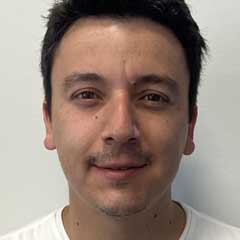
The respiratory rate is an essential component in the energy applied to the lungs. However, despite being a fundamental parameter when setting the mechanical ventilator, its effect on lung injury remains controversial. This lecture will discuss the importance of respiratory rate and evidence regarding its impact on developing lung injury.
10:00 a.m.–10:35 a.m. | CRCE: 0.58
Eddy Fan, MD, PhD
Show description

ECMO is often considered for severe hypoxemia, but its ability to reduce ventilator pressures makes it a considerable option for protective ventilation. This lecture will describe limits of ventilation other than hypoxemia that might be considered as criteria for using ECMO for lung protection.
9:15 a.m.–9:50 a.m. | Track: Education | CRCE: 0.58
Nancy Colletti, PhD, RRT, CPFT
Show description

The 2021 OSRC Workforce survey to determine RT workforce and demand indicated a lack of new RTs entering the field despite a growing demand. Respondents to the survey indicated “not enough qualified graduates from local programs” as one of the most common and critical issues facing hiring managers. CoARC-accredited degree entry programs in Ohio average approximately 60% of the 565-student capacity. During this lecture, the speaker will present creative and innovative collaborative efforts between communities, schools, and health care organizations to increase the number of qualified students enrolling in Ohio respiratory care programs. Strategies to improve recruitment and retention of qualified students into respiratory care programs will be discussed.
9:15 a.m.–9:50 a.m. | Track: Adult Acute Care | CRCE: 0.58
Jon Inkrott, RRT, RRT-ACCS
Show description
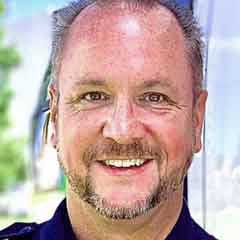
Aeromedical transport has always been a close quarters endeavor. With the advent of COVID-19, risks to caregivers have been amplified. This presentation will discuss how this experience will impact practice during aeromedical transport, PPE use, and how this will alter assessment of the patient.
10:00 a.m.–2:00 p.m. | Track: General
10:00 a.m.–10:35 a.m. | Track: Education | CRCE: 0.58
Gabrielle Davis, MPH, MA, RRT
Samantha Davis, MS, RRT, RRT-NPS, CHSE
Show description


Creating learning environments that center equity, inclusion, and belonging requires awareness and intention. These environments strive to be places where all learners can engage with course content and student experiences are uplifted. This session will highlight ways to avoid systemic educational inequities and practices that faculty can incorporate into future courses.
10:00 a.m.–10:35 a.m. | Track: Adult Acute Care | CRCE: 0.58
Tyler Weiss, MSc, RRT, RRT-ACCS, FCCP
Show description
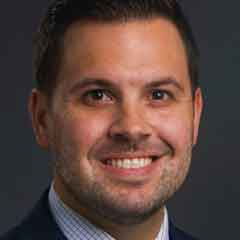
Transport of the patient on mechanical ventilation for imaging and treatment is a common procedure that has garnered the lion’s share of attention. Transport of patients on low flow oxygen is far more common and rarely addressed. What are the standards for monitoring these patients? What are the risks and complexities of transporting a patient on HFNC? How does NIV alter monitoring and care? This topic will cover the transport and monitoring of non-ventilated patients. Is there a role for telemedicine? This patient group has been overlooked and requires attention and research.
10:40 a.m.–11:20 a.m. | Track: General
Jennifer Anderson, EdD, RRT, RRT-NPS
Show description
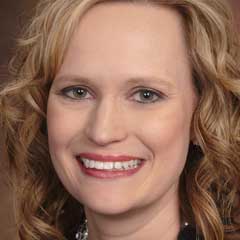
Section members meet to determine their needs and priorities, as well as how to use AARC resources to accomplish them. All Congress attendees, including section non-members, are invited to attend and participate.
10:40 a.m.–11:20 a.m. | Track: General
Maria Madden, MS, RRT, RRT-ACCS
Show description
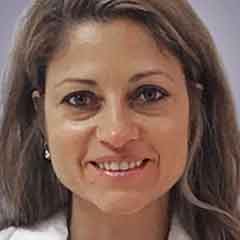
Section members meet to determine their needs and priorities, as well as how to use AARC resources to accomplish them. All Congress attendees, including section non-members, are invited to attend and participate.
12:00 p.m.–12:40 p.m. | Track: General
Joel Brown II, MSM, RRT, FAARC
Show description

Section members meet to determine their needs and priorities, as well as how to use AARC resources to accomplish them. All Congress attendees, including section non-members, are invited to attend and participate.
12:00 p.m.–12:40 p.m. | Track: General
Jon Inkrott, RRT, RRT-ACCS
Show description

Section members meet to determine their needs and priorities, as well as how to use AARC resources to accomplish them. All Congress attendees, including section non-members, are invited to attend and participate.
12:00 p.m.–1:55 p.m. | Track: Diagnostics | CRCE: 1.50
Show description

Researchers present the results of their work. Authors briefly present their findings and engage in an open discussion with the attendees.
Supported by an unrestricted educational grant from
12:00 p.m.–1:55 p.m. | Track: Neonatal/Pediatrics | CRCE: 1.50
Show description

Researchers present the results of their work. Authors briefly present their findings and engage in an open discussion with the attendees.
Supported by an unrestricted educational grant from
12:45 p.m.–2:05 p.m. | Track: Education
12:45 p.m.–1:20 p.m. | CRCE: 0.58
Samantha Davis, MS, RRT, RRT-NPS, CHSE
Show description

Health disparities among LGBTQIA+ communities persist despite increased societal awareness. Simulation is an ideal environment to learn and practice providing affirming care. Despite good intentions, it’s easy to perpetuate harmful stereotypes in the educational environment which can negatively impact patient outcomes. This session will highlight best practices and provide resources for improving your simulation scenario design.
1:30 p.m.–2:05 p.m. | CRCE: 0.58
Jasmine Brown, MS, RRT, RRT-ACCS, CHSE
Show description
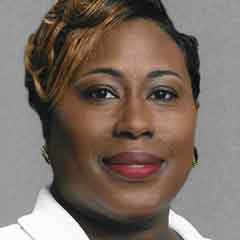
In health care there is a responsibility to prepare clinicians to care for diverse patient populations. This includes providing education that exposes learners to personal attributes such as culture, race, and religion. Literature reviews reveal a deficit in the diverse representation of patient simulators and simulation education programs alike. This session will review special considerations for creating a more diverse simulation experience.
12:45 p.m.–1:20 p.m. | Track: Leadership & Management | CRCE: 0.58
Dave Crotwell, RRT, RRT-NPS, FAARC
Show description

The audience will learn the benefits of using clinical analytics to guide decisions related to care, budget development, and quality/safety measurement. The presenter will also cover the benefits of developing an RC service dashboard to help make evidence-based decisions for utilization management, volume projections and resourcing, safety metric tracking, and building utilization dashboards. Using data to drive decisions in health care is best practice and helps your service line build a reputation of financial stewardship and care utilization management.
12:45 p.m.–1:20 p.m. | Track: Adult Acute Care | CRCE: 0.58
Neil MacIntyre, MD, FAARC
Show description
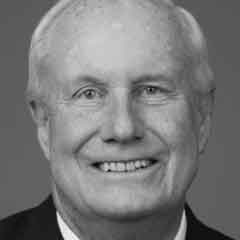
Patient-self-inflicted lung injury (P-SILI) has been described as a mechanism that contributes to lung damage in patients that are spontaneously breathing. But is it real? This presentation will review the concept, ways to detect, and ways to avoid P-SILI.
12:45 p.m.–1:20 p.m. | Track: Neonatal/Pediatrics | CRCE: 0.58
Jill Robinson, RRT, RRT-NPS
Show description

This presentation focuses on the implementation of Bubble CPAP in the delivery room at a major center for women and newborns, and its effect on rates of surfactant administration and bronchopulmonary dysplasia in preterm infants. Attendees will learn about bronchopulmonary dysplasia (BPD) and discuss the respiratory care team’s practice in the NICU.
12:45 p.m.–5:20 p.m. | Track: Adult Acute Care | CRCE: CRCE
12:45 p.m.–1:20 p.m. | CRCE: 0.58
Denise Willis, MSc, RRT, RRT-NPS, AE-C, FAARC
Show description

This lecture will review the important publications related to airway clearance in the last year. This will include the use of insufflation-exsufflation during mechanical ventilation as well as expiratory techniques in both adults and children.
1:30 p.m.–2:05 p.m. | CRCE: 0.58
Joyce Baker, MBA, RRT, RRT-NPS, AE-C, FAARC
Show description

This lecture will review the important publications related to the care of the pediatric asthma patient in the last year. This will include changes in medications, aerosol delivery and use of HFNC in the hospital.
3:15 p.m.–3:50 p.m. | CRCE: 0.58
Dave Burnett, PhD, RRT, AE-C
Show description
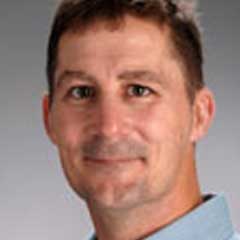
This lecture will review the important publications related to post-ICU syndrome, post-COVID syndrome, the development of post ICU clinics and the role of respiratory therapist care in the last year. This will include techniques to reduce post-ICU syndrome and treatments in the clinic to facilitate rehabilitation.
4:00 p.m.–4:35 p.m. | CRCE: 0.58
Karsten Roberts, MSc, RRT, RRT-ACCS, FAARC
Show description

This lecture will review the important publications related to ventilator liberation in the last year. This will include the use of ultrasound to monitor diaphragmatic function and a reassessment of the rapid shallow breathing index and the spontaneous breathing trial.
4:45 p.m.–5:20 p.m. | CRCE: 0.58
Craig Wheeler, RRT, RRT-NPS
Show description

This lecture will review the important publications related to care of the patients requiring ECMO in the last year. This will include a discussion of recent reports on bleeding complications and the use of prone position during ECMO.
1:30 p.m.–2:05 p.m. | Track: Neonatal/Pediatrics | CRCE: 0.58
Rob DiBlasi, RRT, RRT-NPS, FAARC
Show description

Aerosol therapy is accepted as safe and effective in treating large pediatric and adult patients receiving noninvasive support. Over the last decade, there has been a steady increase in the use of nasal HFNC, CPAP, and NIV in infants. Also, several inhaled medical aerosols have been developed to treat infants with pulmonary diseases. Aerosol administration to infants receiving non-invasive ventilation represents one of the most challenging scenarios in aerosol medical science. This lecture will address some of the technical and physical limitations, efficiency, and safety associated with these combined therapies.
1:30 p.m.–2:05 p.m. | Track: Adult Acute Care | CRCE: 0.58
Timothy Girard, MD, MSCI
Show description

Evidence suggests that early mobilization can improve outcomes—but in what way, and why? This presentation will provide a review of the evidence for early mobilization and offer practical advice on how to best implement the practice at the bedside.
1:30 p.m.–2:05 p.m. | Track: Leadership & Management | CRCE: 0.58
Teresa Volsko, MBA, RRT, FAARC
Show description

Value-based contracting is changing the financial outlook and care delivery landscape for health care institutions. Respiratory therapists have an essential role in driving change by improving quality and financial outcomes for patients across the continuum of care. This lecture will focus on how respiratory therapists can lead innovation and develop new care delivery models to impact the overall wellness, and quality of care which derive better outcomes for the patients and create value for their healthcare organization.
2:15 p.m.–3:05 p.m. | Track: Adult Acute Care, General | CRCE: 0.83
Dean Hess, PhD, RRT, FAARC
Show description

COPD exacerbation is a common cause of hospital admission around the world. Management includes oxygen therapy, aerosol therapy, non-invasive ventilation, medication administration and if required invasive ventilation. This lecture will explore how escalation of therapy should be guided by physical assessment and physiologic measures. It will also discuss how respiratory therapists should drive the use of oxygen therapy and non-invasive ventilation based on patient response and device performance. Mechanical ventilation of the COPD patient requires expertise in monitoring flow limitation and effecting auto-PEEP. Maintenance of blood gases, lung protection and aerosol delivery. Ventilator liberation and post-extubation treatment also require understanding the evidence base.
3:10 p.m.–5:05 p.m. | Track: Clinical Practice | CRCE: 1.50
Show description

Researchers present the results of their work. Authors briefly present their findings and engage in an open discussion with the attendees.
Supported by an unrestricted educational grant from
3:10 p.m.–5:05 p.m. | Track: Clinical Practice | CRCE: 1.50
Show description

Researchers present the results of their work. Authors briefly present their findings and engage in an open discussion with the attendees.
Supported by an unrestricted educational grant from
3:15 p.m.–5:20 p.m. | Track: Leadership & Management
3:15 p.m.–3:50 p.m. | CRCE: 0.58
Garry Kauffman, RRT, MPA, FACHE, FAARC
Show description

The introduction of value efficiency in the AARC Safe and Effective Guide published in Respiratory Care in 2021 was the first step in forging a new value proposition for our profession. This presentation will provide both a reinforcement of the principles of value efficiency as well as an interactive session on how to measure the value efficiency of your services by utilizing the tools that are provided within the guide.
4:00 p.m.–4:35 p.m. | CRCE: 0.58
David Eitel, MHA, MSRT, RRT, RRT-ACCS, CPRFT
Show description

This presentation provides attendees with a crash course in all things productivity, tracking, and value efficiency. Attendees will learn the core elements of productivity and move into productivity tracking systems all the way to value efficiency programs recently published in the Safe and Effective Staffing Guide. Regardless of experience, attendees will find valuable resources and creative ideas on how to move their operations into a new wave of productivity management. The presentation will include ideas, workarounds, and unique do-it-yourself options for departments of any size and specialty.
4:45 p.m.–5:20 p.m. | CRCE: 0.58
Katlyn Burr, RRT, RRT-NPS, AE-C
Show description

This lecture will review the staff management portion of the AARC Safe and Effective Staffing Guide and offer tools and resources on how respiratory care managers can optimize productivity.
3:15 p.m.–3:50 p.m. | Track: Neonatal/Pediatrics | CRCE: 0.58
PRO: Steven Shein, MD, FCCM
CON: Martin Kneyber, MD, PhD, FCCM
Show description


Practice variability in the pediatric intensive care unit is best exemplified by our heterogeneous and inconsistent (non-) invasive respiratory support practices. It is driven by lack of high-quality, robust scientific evidence and by personal beliefs, institutional preferences and on what works in adults. This may be especially reflected in the use of non-invasive modalities such as high-flow nasal cannula oxygen therapy and non-invasive ventilation. This pro-con debate provides the attendees with two opposing views on the role of post-extubation respiratory support, by discussing the benefits and drawbacks.
3:15 p.m.–3:50 p.m. | Track: Education | CRCE: 0.58
Kristen McHenry, EdD, RRT, RRT-ACCS
Show description

Much has been discussed regarding burnout among front-line health providers during the pandemic, however, much less has been considered about health science faculty who serve as clinical educators. The prolonged strain on these individuals as a result of fulfilling numerous faculty responsibilities coupled with professional field work can lead to exhaustion, disengagement from their work, and poor perception of well-being. This presentation will explore areas of work life that have been greatly affected by the educational shift in operations due to COVID-19, how it has impacted clinical educators specifically, and administrative efforts that could be employed to further engage and support this valuable member of higher education.
3:15 p.m.–3:50 p.m. | Track: Adult Acute Care | CRCE: 0.58
Jie Li PhD, RRT, RRT-ACCS, FAARC
Show description

High-flow nasal cannula (HFNC) oxygen therapy has been reported to improve oxygenation and reduce intubation for patients with acute respiratory failure. The clinical indications have been profoundly investigated in the past decade. However, there is no consensus on HFNC flow settings, which may play a key role in the success of HFNC treatment. In this lecture, the physiologic effects of HFNC flow settings for adult and pediatric patients will be reviewed, and the current evidence on the optimal flow setting for patients with acute hypoxemic respiratory failure will be presented.
4:00 p.m.–4:35 p.m. | Track: Neonatal/Pediatrics | CRCE: 0.58
Samer Abu-Sultaneh, MD, FAAP, FCCM
Show description

Reducing ventilator days in critically ill children is critical to reducing harm and morbidity associated with prolonged ventilation. Standardization of extubation readiness assessment, including spontaneous breathing trials, is an important component to reducing ventilator days. Despite this, variability in assessing extubation readiness often varies by center. This presentation will address the benefits and current evidence associated with SBT protocols in children.
4:00 p.m.–4:35 p.m. | Track: Education | CRCE: 0.58
Bill Galvin, MSEd, RRT, AE-C, FAARC
Show description
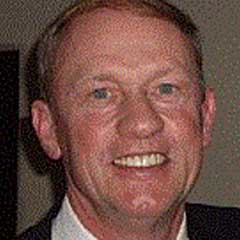
Do you have any interest in teaching? …making the transition from a clinician to an RC educator? …joining the ranks of a college/ university faculty? The respiratory care profession is experiencing a serious shortage of its human resources and this shortage is occurring in the classroom (education sector) as well as the clinical arena (department level). Cultivating new educators is critical to our success and survival. This presentation will address the needs, roles, responsibilities, and functions of RT educators. It will aid RTs in considering a transition into the world of RC education and will provide an abbreviated picture of what the aspiring RT educator can expect. If you are interested or considering a transition into a teaching role, don’t miss this.
4:00 p.m.–5:20 p.m. | Track: Adult Acute Care
4:00 p.m.–4:35 p.m. | CRCE: 0.58
Danny Theodore, MD
Show description

Your patient was difficult to intubate, but now it is time to extubate. What steps should you take next? This presentation reviews risk factors and available algorithms involved in extubation after intubation.
4:45 p.m.–5:20 p.m. | CRCE: 0.58
John Davies, MA, RRT, FAARC
Show description

This session will review the current evidence and best practices for intubation outside the operating room setting. Airway management strategies, equipment, and techniques, with an emphasis on the critically ill patient in the ICU, will be reviewed.
4:45 p.m.–5:20 p.m. | Track: Education | CRCE: 0.58
Samantha Davis, MS, RRT, RRT-NPS, CHSE
Kyle Mahan, EdD, MSM, RRT
Tyler Weiss, MSc, RRT, RRT-ACCS, FCCP
Lee Wisdom, MHS, RRT, RRT-ACCS, RRT-NPS
Show description




With so many degree options (PhD, EdD, DSc, DrPh, etc.), it’s easy to get lost in the alphabet soup. Identifying the right program can be challenging! Considering a career path after the degree may be hard to imagine if you don’t know anyone who has been through it. In this discussion, panelists will leverage their own personal experiences to expand the understanding of life as a doctoral student and highlight successful career pathways available to respiratory therapists.
4:45 p.m.–5:20 p.m. | Track: Neonatal/Pediatrics | CRCE: 0.58
Robinder Khemani, MD, MsCI
Show description

This presentation will discuss risk factors, impact, and interventions related to post-extubation airway obstruction. Attendees will also review the evidence associated with the endotracheal tube air leak test to predict post-extubation upper airway obstruction.
There are no sessions that match your display preferences.